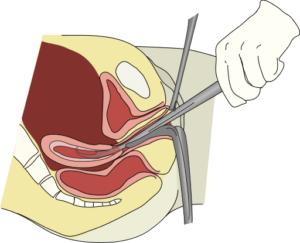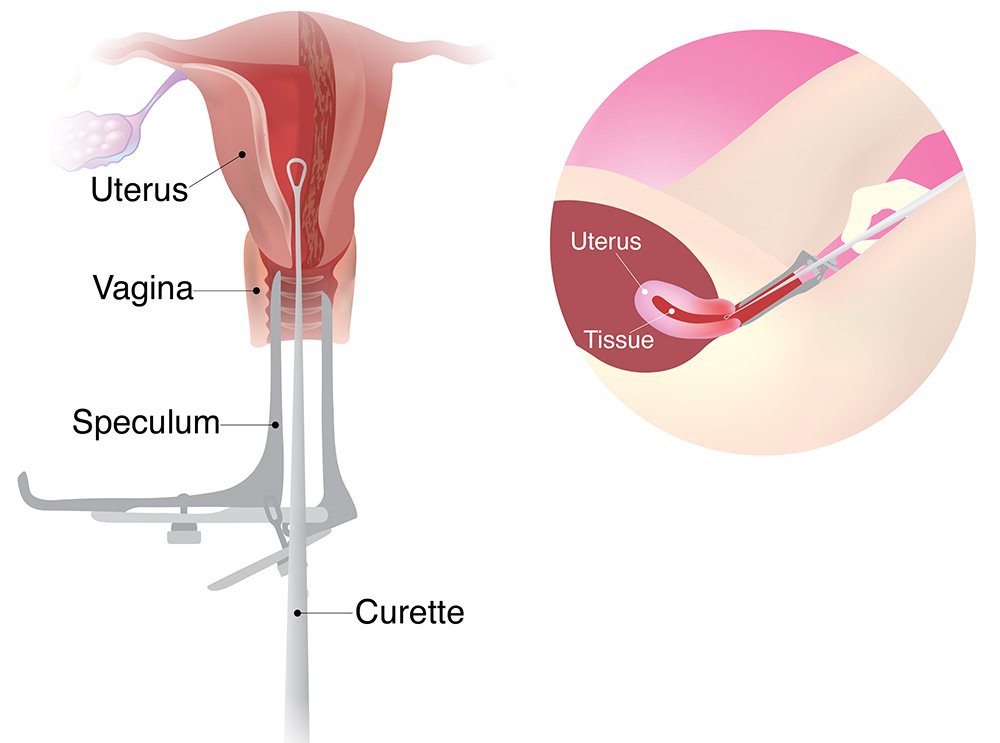Dilation and Curettage
(D&C)
Is a medical procedure performed to remove damaged or dead tissue from the inside of the uterus. It is often used by doctors to diagnose and treat certain uterine conditions, such as heavy bleeding, or to clean the uterine lining following a miscarriage.
During a D&C procedure, the doctor uses small instruments or medication to dilate the cervix. Subsequently, a surgical tool called a curette is employed to remove tissue from the uterine cavity.

Why is D&C Performed?
A D&C is often recommended for diagnostic reasons, such as when:
- A woman experiences unexplained uterine bleeding.
- A woman experiences bleeding after menopause.
- Abnormal cells are detected in the uterine lining during a routine Pap smear.
- Irregular menstrual cycles.
- Pelvic pain or cramps.
- Heavy bleeding.
- Pain during intercourse.
Fertility issues.

The doctor may recommend a D&C to obtain cells from the uterus to determine if abnormal cells have spread from the cervix into the uterine cavity. The collected sample is sent to the laboratory for microscopic analysis to identify whether there are any cancerous or precancerous cells.
Key Steps in Performing D&C:
Upon arrival for the procedure, the nurse will ask the patient to change into a hospital gown. Vital signs, such as pulse, temperature, and blood pressure, will be measured to ensure the patient’s stability. Blood samples will also be taken for routine laboratory tests. Next, a small plastic catheter will be inserted into the vein for intravenous fluids and anesthesia.
Once the doctor is ready, the patient will be positioned on the operating table. After anesthesia, the procedure follows these steps: The doctor will insert a device called a speculum into the vagina to visualize the cervix. The cervix is dilated using special instruments.
After dilation, a curette (spoon-shaped surgical instrument) is used to scrape the uterine wall. The doctor may also use suction to remove blood and dead tissue.
Once the procedure is complete, the doctor removes all instruments and sends the tissue samples for laboratory analysis.
Risks and Complications:
Frequently Asked Questions FAQ
What are the risks associated with anesthesia during a D&C procedure?
As with any surgical procedure, there are risks related to anesthesia, such as allergic reactions to certain medications. It is important for patients to inform their doctor of any pre-existing conditions or allergies to ensure the safest possible approach during the procedure.
What is uterine perforation, and how does it occur during a D&C?
Uterine perforation occurs when a surgical instrument accidentally punctures the uterus. This is more likely in women who have recently been pregnant or those who are post-menopausal, as the uterine wall may be thinner. While most uterine perforations are minor and heal on their own, larger perforations may require surgical repair.
What happens if the cervix is injured during the D&C procedure?
If the cervix is damaged during the procedure, the doctor may apply pressure, use medication to stop bleeding, or close the tear with sutures to prevent further complications.
Can scar tissue form in the uterus after a D&C, and what are the consequences?
In rare cases, a D&C can cause the development of scar tissue inside the uterus, a condition known as Asherman’s Syndrome. This can lead to abnormal or absent menstrual cycles, painful periods, recurrent miscarriage, or infertility.
What are the risks of infection after a D&C?
Infection is a rare but possible complication after the procedure. It is important to monitor for signs of infection, such as fever, unusual discharge, or severe pain, and seek medical attention if any of these symptoms occur.
What is the typical recovery process after a D&C?
After the procedure, the effects of anesthesia generally last for a few hours. Patients may experience fatigue, dizziness, nausea, or grogginess, which typically subside on their own. It is recommended to avoid driving on the day of the procedure. Mild cramping and light bleeding are common for a few days after the procedure. Patients should rest and avoid strenuous activities during the recovery period. If signs of infection or any unusual symptoms occur, patients should contact their doctor immediately.
